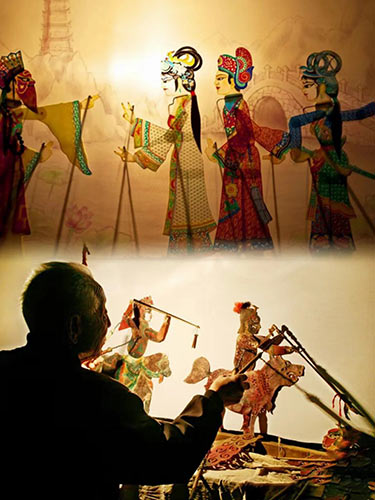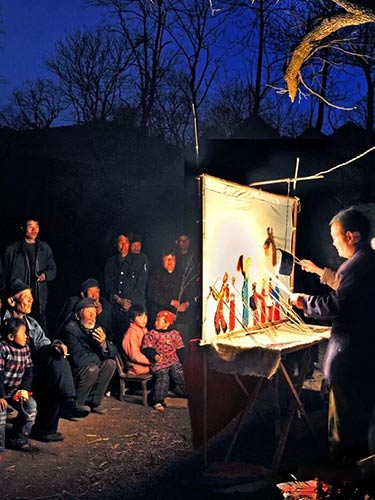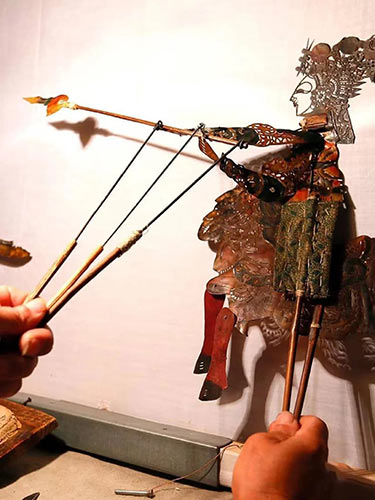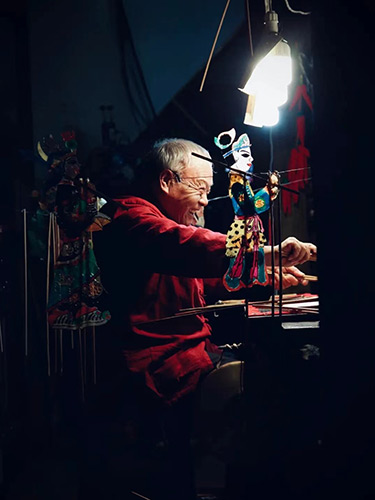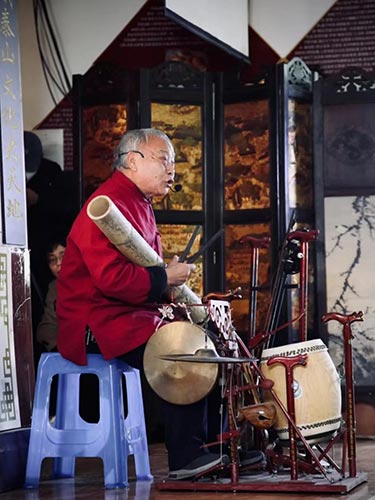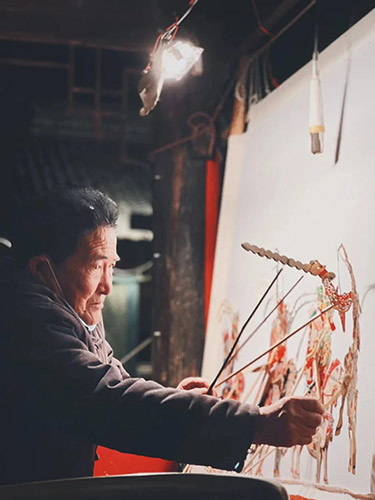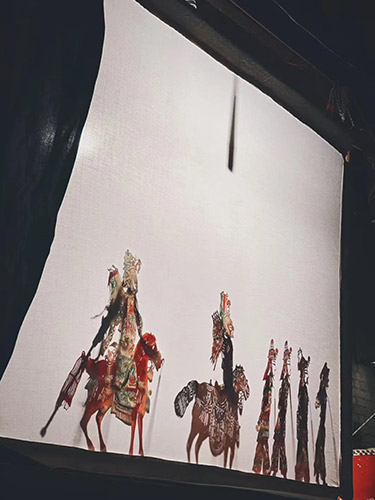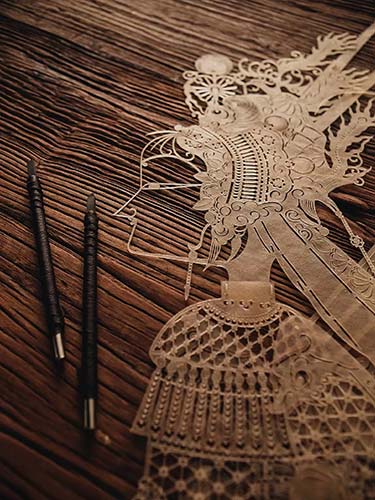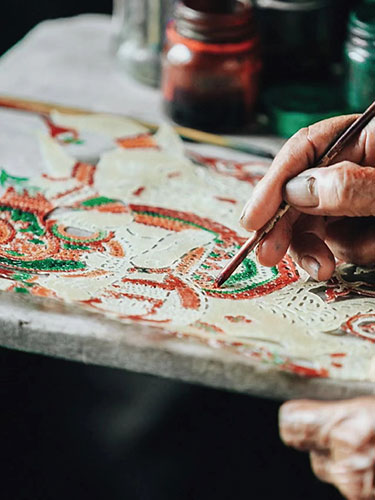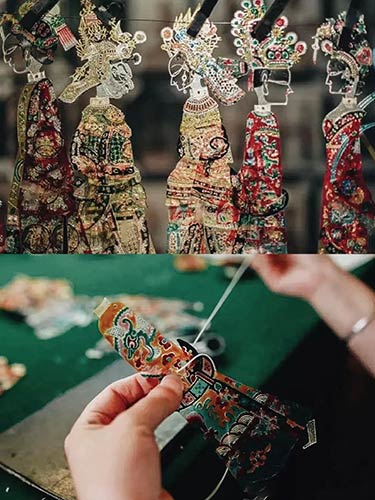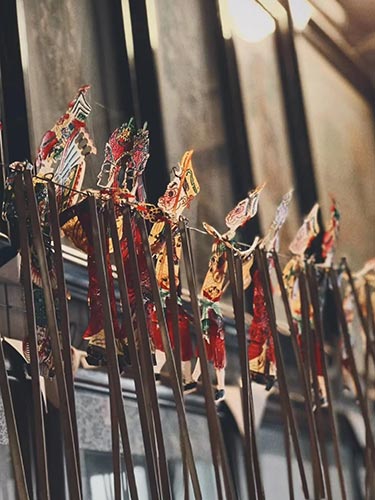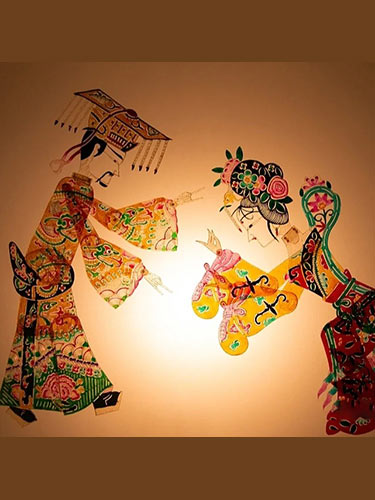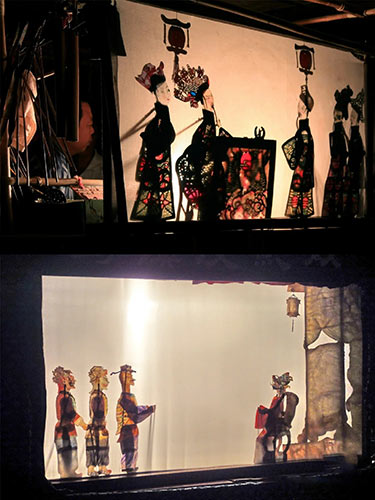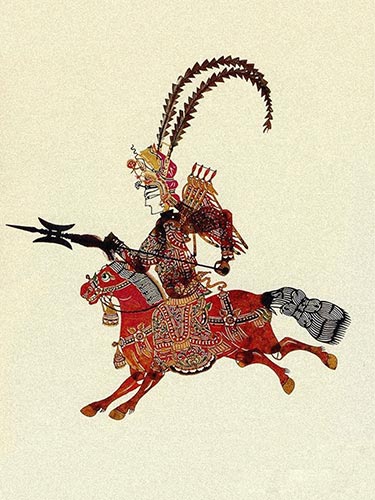Chinese Shadow Puppetry, which began in the Western Han Dynasty, appeared 1,800 years before the mature theatre of the Shakespearean period in the West. Shadow Puppetry is a form of theatre in which figures are silhouetted on animal skins or cardboard, and performed under the light of a light source through an insulating cloth.
Shadow Puppetry is an important representative of intangible cultural heritage of mankind, as it unites the essence of traditional Chinese modelling and performing arts. By virtue of its exquisite modelling, exquisite manipulation techniques, beautiful singing and rich repertoire, shadow puppetry is unique and everlasting in the world of performing arts.
Shadow Puppetry performers, “shadow holding hands”, can operate multiple roles at the same time, controlling up to four to five puppets, and even taking care of the roles of music, narrator, and lyrics. In addition to the complexity of the performers’ operations during the show, the production of the shadow puppets is also not simple.
Each shadow needs to go through eight processes, such as skin selection, skin making, drawing, drafting, carving, coloring, sweating and ironing, decorating and combining, etc., and undergoes more than 3,000 knives before it can be shaped.
Excellent works know no boundaries, and Goethe, the great German writer, was once fascinated by Chinese shadow puppetry. He wrote in “Goethe’s Autobiography” “she portable shadow puppetry characters on the stage, changed into a tragedy, caused our childish reverie, especially my view of this shadow theatre, a lifetime of endless use ……“
“On the one hand to set aside all the qualifications that divide mankind, race, religion or political education, as well as differences; on the other hand to highlight the laughter and tears, the joys and sorrows, the pleasures and fears, in short, everything that has to do with inner feelings, that are shared by all mankind”
This is undoubtedly the essential power of the theatre.

